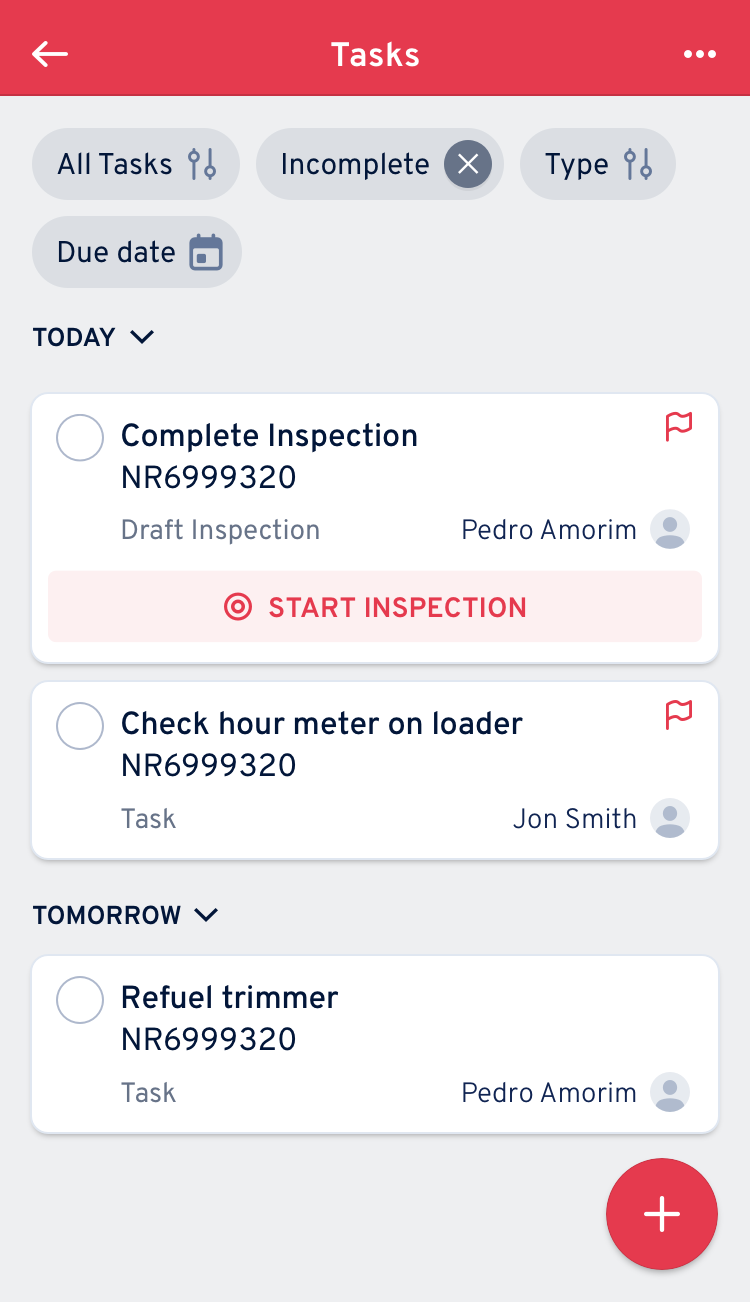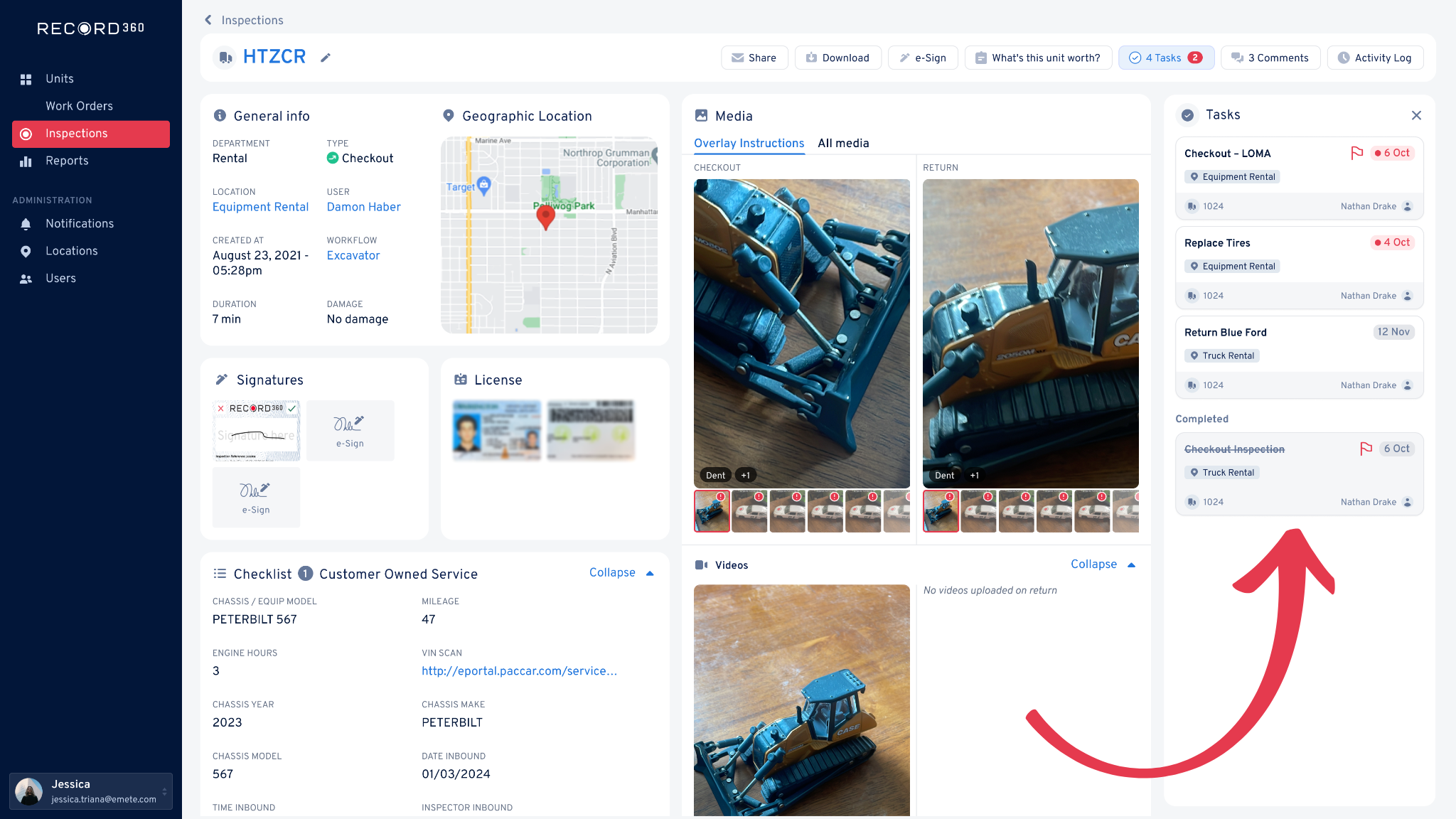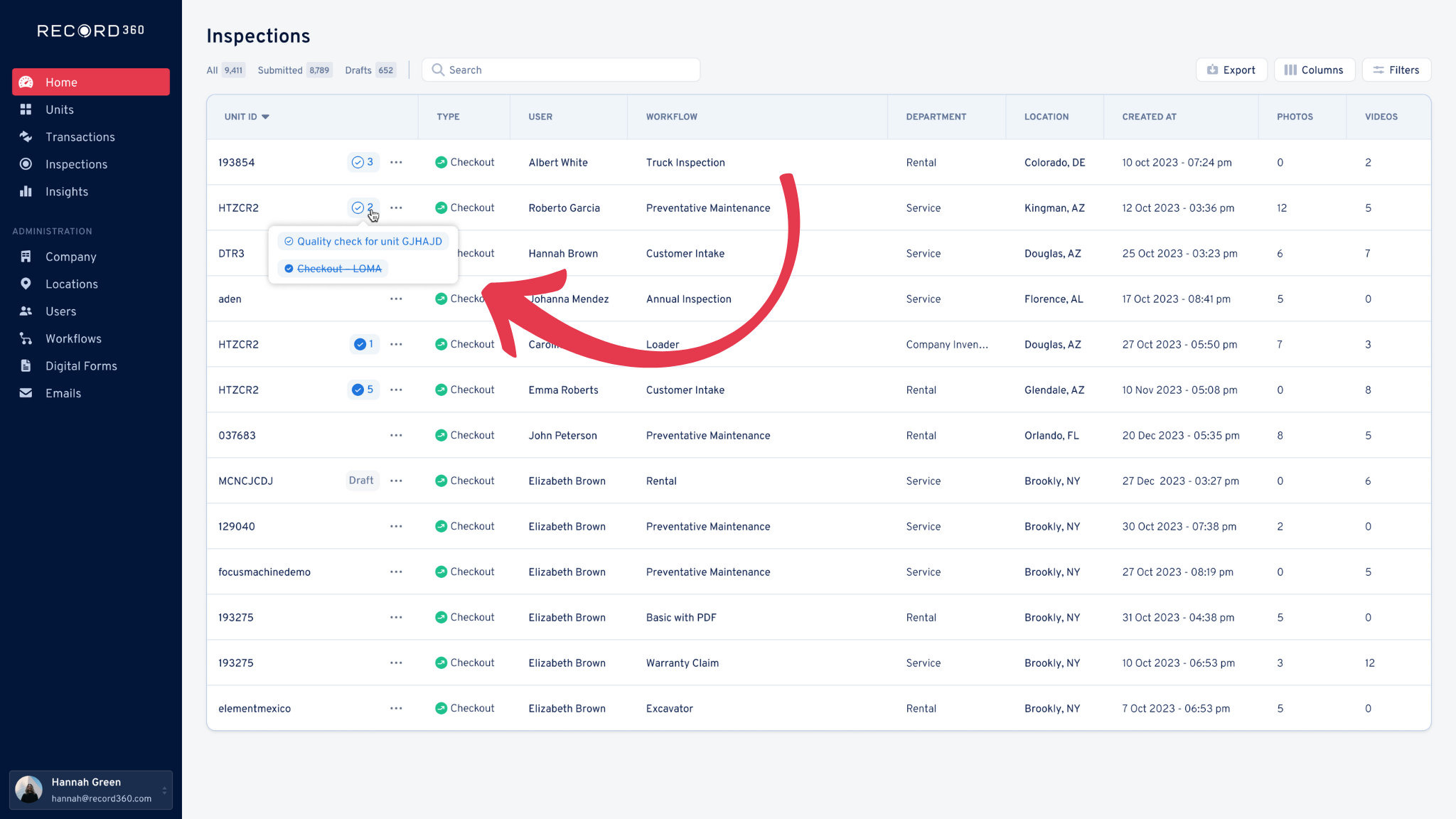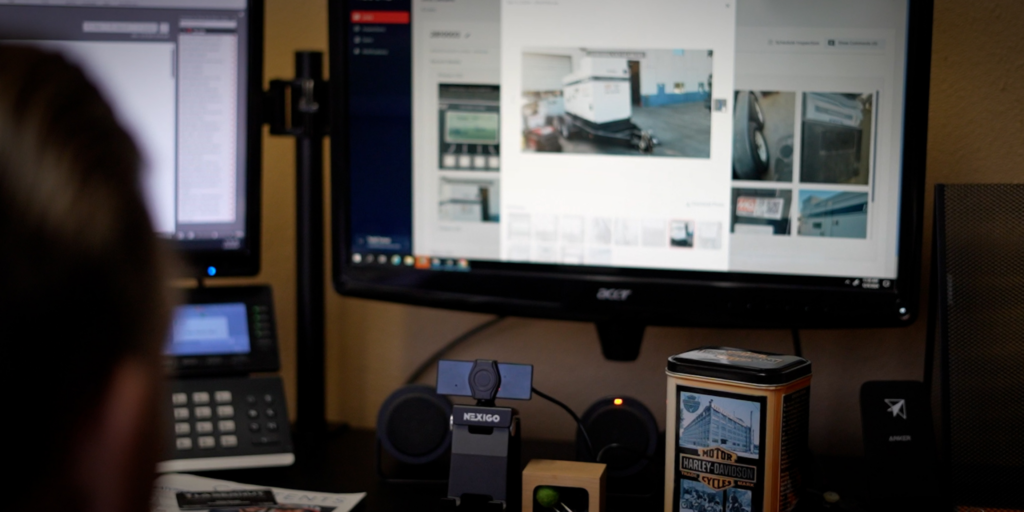Tired of manual processes after finishing an inspection? Does your team forget to follow-up on important tasks like damages or services due? Need to have an automatic task created for specific departments? Task Triggers take the hassle out of task creation—automating the follow-up process so nothing falls through the cracks. The potential use cases are limitless!
More Automation, Less Manual Work

Task Triggers will automate your post-inspection workflows by instantly creating follow-up tasks when key conditions are met. When inspections uncover issues that require fast action such as reported damage, service requirements, or returned rentals, these intelligent rules turn inspection data into immediate, actionable steps. The follow-up tasks are sent to the right team members with due dates, department tags, and workflow labels. This ensures the right follow-up inspections or actions happen, without dropped steps or manual back-and-forth.
Who Is This Designed For?
When inspectors discover issues like damages, overdue maintenance, or missing parts, teams often rely on emails, phone calls, or sticky notes to get the follow-up task done. These outdated methods often lead to delays, miscommunication, and overlooked details. Task Triggers solve this by automating the next steps, ensuring your team stays on top of every detail without lifting a finger—replacing manual follow-ups with smart automation.
Whether you’re managing a fleet of heavy equipment, commercial vehicles, trucks, or cars, Task Triggers help frontline teams, service managers, and back office staff stay aligned, reduce delays, and keep your business running smoothly.
Real-World Applications of Task Triggers

Task Triggers are flexible enough to support a wide range of high-value follow-ups. Here are just a few examples of it in action.
1. Damage Follow-Up
When damage is marked during an inspection, Task Triggers will automatically create a follow-up task for a service manager or technician to review the issue, complete a service inspection, or initiate a repair. Task Triggers take care of notifications without manual intervention.
2. Recurring Inspections
Trigger follow-up tasks for Preventative Maintenance (PM), Department of Transportation (DOT) checks, or other recurring inspections based on form inputs or inspection completions. While not a full scheduling tool, Task Triggers makes it easy to kick off the next step in a recurring workflow, helping you stay on top of routine inspections and keep your fleet in check.
3. Sequencing Inspections
Go beyond standard check-out/check-in flows. Manage custom inspection sequences, like pre-rent checks, ready tags, and more. Each step in the sequence is triggered automatically, aligning with how your operations actually run. Whether it’s across departments, locations, or roles (manager, inspector, mechanic, etc), Task Triggers keep your workflow seamless and efficient.
These are only a few use cases that are possible. Any manually created follow-up tasks can now be automatically generated with our new feature.
Task Triggers: Automate Your Follow-Up Tasks

No more missed steps or manual coordination. Record360’s automated Task Triggers make follow-up task creation easier than ever! From damage follow-ups to semi-annual service checks, your team will operate more efficiently than relying on traditional sticky note reminders.
Want to learn more? Reach out to our team at support@record360.com.
New to Record360? Get a demo with our experts today and discover why the top rental companies have already made the switch.















